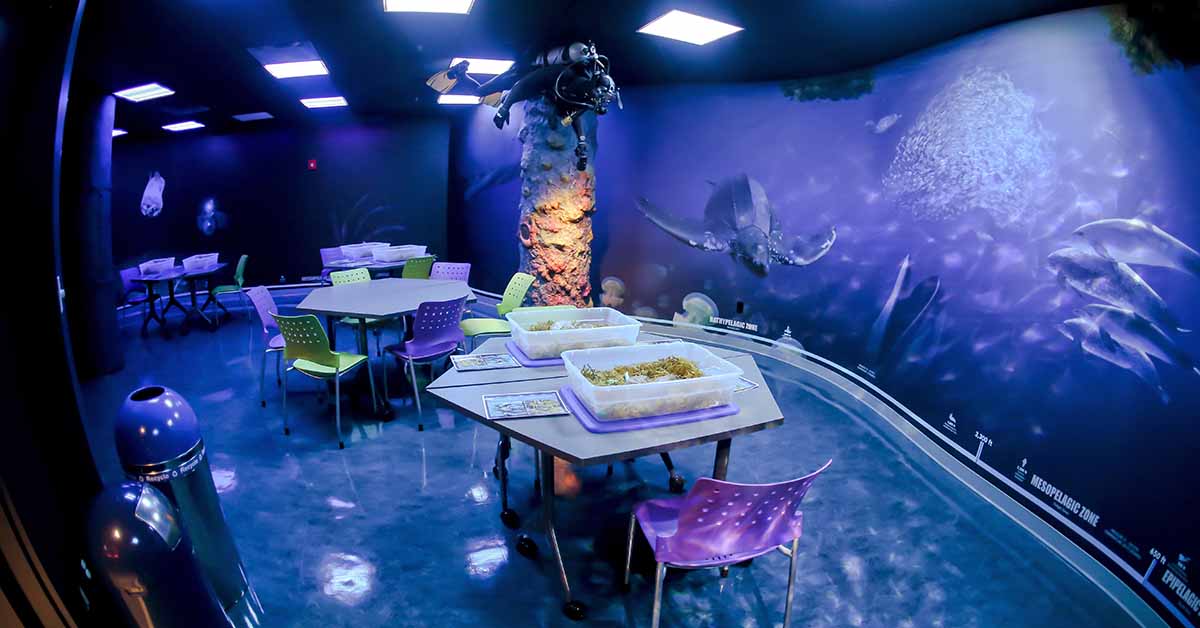
Building Interactive Immersion through Technology
The concept that technology is disruptive is yielding to a new interpretation. Technology is transformative--it has become so integrated into the consumer’s daily life that it now plays a pivotal role in fueling meaningful experiences. As such, technology-enabled experiential design has the potential to dramatically enhance opportunities for exposure (brand awareness), knowledge (museum environments), and entertainment (amusement parks).
The different types of technology available to impact experiences range from smartphone apps capable of finetuning experience to expansive physical deployments leveraging LCDs, RFIDs, projection systems, etc., to create genuinely immersive visual and auditory skills.
When fully utilizing these tools it’s possible to provide genuinely immersive auditory experiences. These include the use of dynamic audio that changes over time, spatial sound that controls who hears what and where, and purpose-driven audio that capitalizes on acoustic goals. The same is true in creating immersive visual experiences that captivate the guest.
Enhancing technology
Beyond the physical devices, it’s the acquisition and utilization of information that ultimately empowers highly customized experiences. This is true whether the goal focuses on introducing a prospective customer to a product/service or seamlessly directs the consumer to another location on the campus.
Perhaps the most significant benefit of today’s increasingly mobile technology is the enhanced ability to personalize experiences continually. Technology makes it possible to combine aggregated data from cell phones, social profiles, and direct user inputs to drive virtual reality, augmented reality, or interactive photographic images. Expertly blending data with technology also enables the use of gamification, including allowing a guest to use their smartphone to change the color of the stage during a performance.
Eye on the future
Here’s the exciting part of experiential design: most technology-fueled deployments are just scratching the surface when it comes to utilizing the tools available to provide consumers with personalized experiences.
Tapping into social profiles can make a significant difference when relating the experience to the consumer. Doing so makes it possible to know the foods people like and even appreciate what the consumer thinks plates should look like. The photos they share will guide their future experiences.
Understandably, this level of information harvesting and management can quickly become a sensitive issue. After all, people are giving access to information to enjoy a more personalized experience in return. For this to work, organizations need to address the trust issue upfront.
Today’s mobile technology is also far more advanced than most realize. Most smartphones have accelerometers as well as the ability to leverage magnetic fields – neither of which are fully utilized. Organizations could tap into accelerometer outputs to recognize when people are moving beyond a specific deployment before the message is relayed. Having this type of information could enable the seamless modification of the next visual or audio experience. Better utilization of near-field communication (NFC) could assist in recognizing when existing customers enter into new areas to ensure a personalized experience.
Meaningful deployments
Technology is a powerful enabler – yet using technology for the sake of technology rarely yields anticipated results. To get the most out of technology, it is crucial to consider the big picture. Key aspects to consider when leveraging technology include:
- What content do you hope to share with the visitor?
- What perspective will the visitor have?
- How will the technology under consideration impact the result?
- How can the use of technology enhance—rather than replace—the surroundings?
Many of the best deployments augment the existing environment. For instance, if there is already a fantastic view, consider technology that can enhance the imagery. Or if walls surround the guest, find a deployment that makes them appear to fly away throughout the engagement.
When it comes to experiential design, the overarching goal may be to create a true masterpiece that encourages visitors to return repeatedly. Such successes always start with understanding the experience you wish to deliver as well as the customer or visitor’s perspective. Taking this approach allows technology to serve as the building blocks for a meaningful and truly immersive experience.
Maurizio Capuzzo
Maurizio Capuzzo, Electrosonic’s Chief Marketing Officer, fuses the science of data with the art of visual and verbal communication to explain how technology adds value and helps foster innovation. Maurizio writes from a wealth of experience, holding leadership roles in global technology companies as well as possessing a deep understanding of how technology contributes to business growth.










.jpg?width=1500&height=995&name=ELC501_N17_medium%20(1).jpg)








































































































































































































